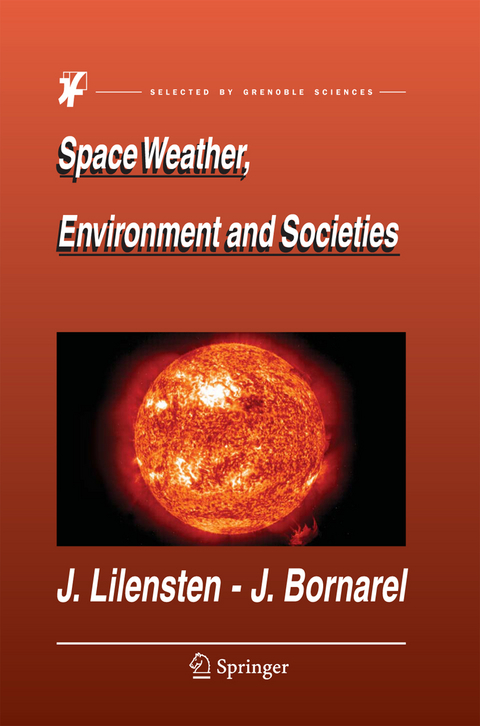
Space Weather, Environment and Societies
Springer (Verlag)
978-94-024-0455-5 (ISBN)
Our planet exists within a space environment affected by constantly changing solar atmosphere producing cosmic particles and electromagnetic waves. This "space weather" profoundly influences the performance of our technology because we primarily use two means for transmitting information and energy; namely, electromagnetic waves and electricity. On an everyday basis, we have developed methods to cope with the normal conditions. However, the sun remains a fiery star whose 'angry' outbursts can potentially destroy spacecrafts, kill astronauts, melt electricity transformers, stop trains, and generally wreak havoc with human activities. Space Weather is the developing field within astronomy that aims at predicting the sun’s violent activity and minimizing the impacts on our daily lives. Space Weather, Environment, and Societies explains why our technological societies are so dependent on solar activity and how the Sun disturbs the transmission of information and energy. Footnotes expand specific points and the appendices facilitate a more thorough command of the physics involved.
Jean Lilensten, PhD, is a permanent researcher at the Planetary Laboratory (Grenoble, France). He has been involved in space weather researches from the very beginning of this emerging area. He takes a very active part in its organization in Europe: he participates in different Space Weather actions with public and private partners (ESA, CNES, Alcatel, European Union…). He is the coordinator of the European Coordination action in Science and Technology devoted to Space Weather. He is also a member of the scientific staff of several instruments used in Space Weather studies (interferometer, radar, space instruments). "Environment, Societies and Space Weather" is his fifth scientific book. Jean Bornarel, PhD, is Professor in Physics at the Joseph Fourier University of Grenoble and a Solid State Physics specialist. This book benefits from his great experience on teaching strategies.
Introduction. Acknowledgements.- The sun.- The formation of the stars and the sun.- The characteristics of the sun.- A representation of the sun.- The internal structure of the sun.- The photosphere, solar radiation, the solar wind.- The thermal profile of the solar atmosphere.- Solar dynamics.- The sun: at the source of space weather.- The earth.- The earth within the solar system.- The internal structure of the earth: the geomagnetic field.- The atmosphere of the earth.- The magnetosphere.- Toward a space weather.- The consequences of solar agressions on our technological environment.- Other impacts of solar activity.- Space weather in order to forecast.- Appendices.- A few useful constants.- References. Word glossary. Glossary of names. Acronyms and logos. Index.
| Erscheinungsdatum | 09.07.2016 |
|---|---|
| Zusatzinfo | X, 242 p. |
| Verlagsort | Dordrecht |
| Sprache | englisch |
| Maße | 155 x 235 mm |
| Themenwelt | Naturwissenschaften ► Biologie ► Ökologie / Naturschutz |
| Naturwissenschaften ► Geowissenschaften ► Geologie | |
| Naturwissenschaften ► Geowissenschaften ► Meteorologie / Klimatologie | |
| Naturwissenschaften ► Physik / Astronomie ► Angewandte Physik | |
| Naturwissenschaften ► Physik / Astronomie ► Astronomie / Astrophysik | |
| Technik ► Umwelttechnik / Biotechnologie | |
| ISBN-10 | 94-024-0455-4 / 9402404554 |
| ISBN-13 | 978-94-024-0455-5 / 9789402404555 |
| Zustand | Neuware |
| Haben Sie eine Frage zum Produkt? |
aus dem Bereich


